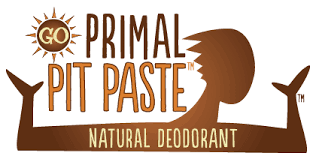Your choice makes a difference. When you choose seafood from local, sustainably-managed fisheries or dine with businesses that do the same, you become part of the movement to protect our oceans.
— Andrea Margiotta, Good Catch Coordinator at the South Carolina Aquarium
Q: What is Good Catch?
A: South Carolina Aquarium Good Catch generates awareness and leads communities in support of local fisheries and consumption of responsibly harvested seafood. A “Good Catch” is local and sustainable, one that is caught or farmed with consideration for the long-term viability of the species and for the ocean’s ecological balance as a whole. Our partners have committed to serving a higher percentage of sustainable seafood sourced from southeast regional fisheries, which adhere to some of the strictest regulations set worldwide – a critical factor in maintaining a balanced ocean. Platinum Partners are also committed to reducing the use of single-use plastic at their business and following proper recycling procedures for their city.
Q: What can we do to buy sustainable fish and seafood products that are good for the marine life and the planet and our health?
A: The best way to buy sustainable fish and other seafood products is to choose seafood sourced from the southeast regional fisheries that adhere to some of the strictest regulations set worldwide – a critical factor in maintaining a balanced ocean. It is also important to buy seafood that is in season because this helps to distribute fishing impact more evenly across the marine ecosystem and reduces overfishing which results in more sustainable fisheries. Southeastern seafood seasonality is listed on the “What’s In Season?” chart found on the Good Catch website: scaquarium.org/goodcatch.
Q: What advice can we give conscious consumers/diners that are all over the world?
A: Whether your readers are dining in the southeast or elsewhere, it is very important to order seafood from the local fisheries. Choosing local seafood also helps to reduce our carbon footprint because of fewer food miles traveled. Make sure to ask your server where the seafood was harvested—if it is not local/regional or they do not have an answer, find another option. I also suggest diners be flexible and willing to try different seafood options depending on the season.
Q: How do regulations and quality compare between US and major imports?
A: In the southeastern region, we follow the regulations set by the South Atlantic Fisheries Management Council (SAFMC) that provide to some of the strictest regulations set worldwide. Outside of our region, seven additional fisheries management councils govern fishing in US federal waters. The Regional Council systems manage topics like fishing seasons, quotas, and closed areas. Good Catch advises consumers to choose local/regional seafood first and then domestic seafood because of our knowledge of regulations.
Q: What are local sustainable fish and seafood choices for both upcountry and lowcountry Carolinas?
A: Please refer to “What’s In Season?” chart listed on the Good Catch website: scaquarium.org/goodcatch.
Q: Bottom line: What is the most important information that a mindful consumer/diner should know?
A: As seafood consumers in the southeastern US, it is most important to request locally/regionally sourced seafood to support the local economy, to reduce our carbon footprint and to make sure to get the most sustainable seafood possible.
Your choice makes a difference. When you choose seafood from local, sustainably managed fisheries or dine with businesses that do the same, you become part of the movement to protect our oceans.
The South Carolina Aquarium Good Catch website lists Good Catch Partners who are committed to serving a higher percentage of sustainable seafood sourced from southeast regional fisheries, which adhere to some of the strictest regulations set worldwide: scaquarium.org/goodcatch.
Contact info:
Andrea Margiotta
Good Catch Coordinator
South Carolina Aquarium
100 Aquarium Wharf
Charleston, SC 29401
Direct Line: (843) 579-8544
scaquarium.org/goodcatch

